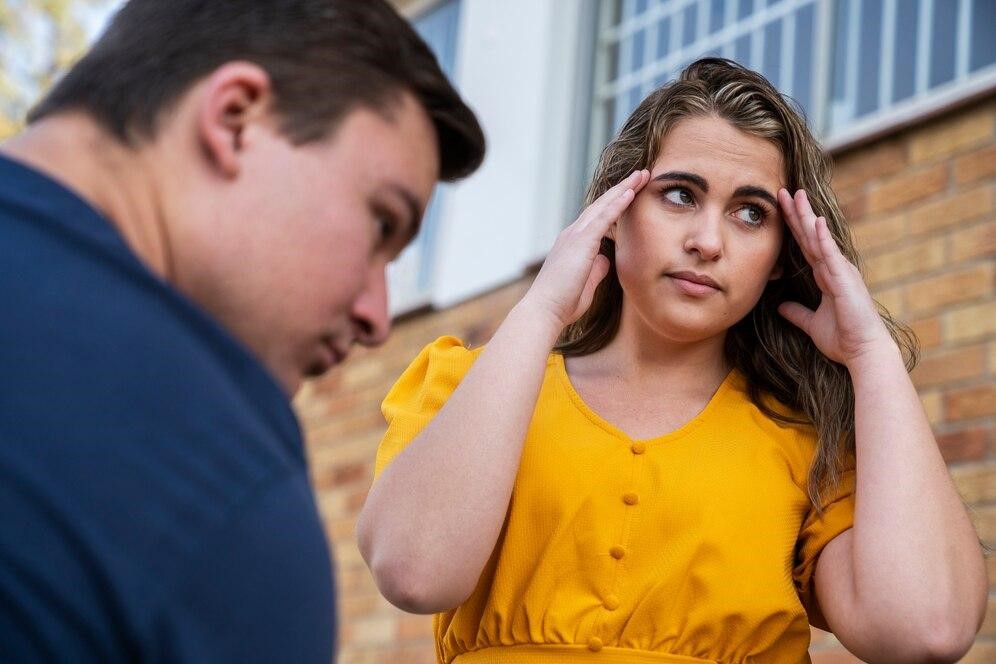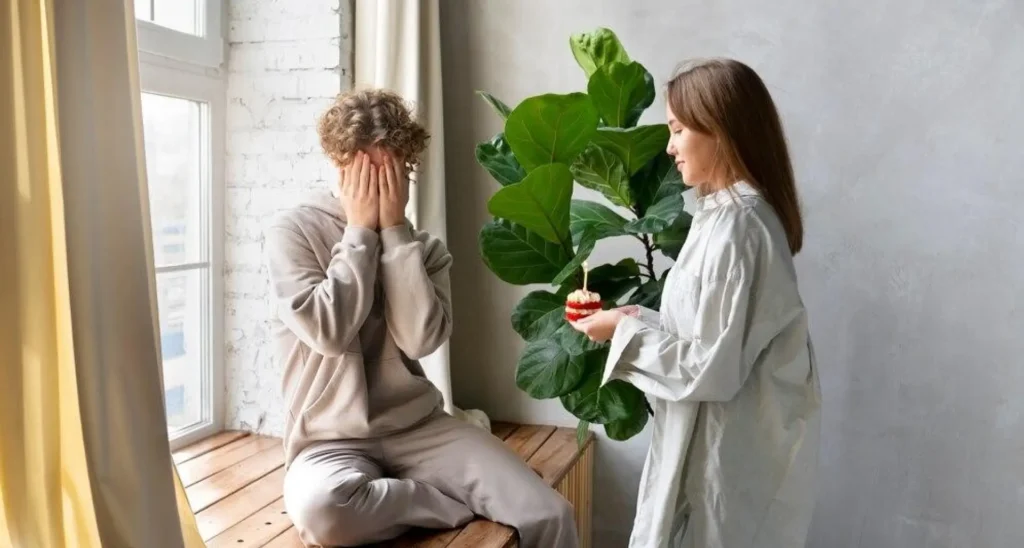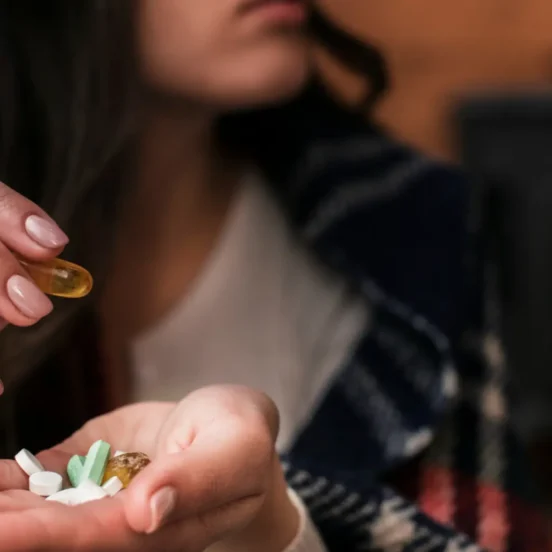How to Heal Anxious Attachment? An Expert Guide
Anxious attachment is a common relational issue that can significantly impact one’s emotional well-being and relationships. Rooted in early experiences with caregivers, this attachment style is characterized by a deep fear of abandonment and an intense need for closeness and reassurance.
People with anxious attachment often find themselves in a cycle of worry and dependence, which can be distressing for both themselves and their partners. While both girls and boys can develop anxious attachment, studies suggest that it may be more prevalent among women due to social and cultural factors that influence emotional expression and relational dynamics.
Understanding how to heal anxious attachment is crucial for fostering healthier, more secure relationships and achieving emotional balance.
How to Self Soothe Anxious Attachment
Anxious attachment often originates in early childhood, typically due to inconsistent or unpredictable caregiving. When a caregiver is intermittently available or emotionally unpredictable, a child may develop a heightened sense of anxiety about whether their needs will be met.
Learning how to self-soothe anxious attachment is essential for developing healthier relationships and emotional stability. The first step is to recognize and understand your attachment style. Acknowledge your fears and anxieties without judgment, and remind yourself that these feelings are a product of past experiences, not necessarily present realities.
Mindfulness practices, such as deep breathing exercises and meditation, can help ground you in the moment and reduce anxiety. Creating a self-care routine that includes physical activities, hobbies, and relaxation techniques can also promote emotional well-being. It’s important to challenge negative thoughts and replace them with positive affirmation
s, reinforcing your worth and capability to maintain healthy relationships. Seeking professional help from a therapist who specializes in attachment issues can provide tailored strategies and support.
Building a strong support network of friends and loved ones who understand and respect your emotional needs is also crucial in the journey of healing anxious attachment.
“Every step towards healing is a step towards freedom and joy”
“Every step towards healing is a step towards freedom and joy”
Why are Anxious Attachment Attracted to Avoidant?
The dynamic between anxious and avoidant attachment styles can often feel like a magnetic pull despite the inherent challenges it presents. Anxious individuals, driven by their fear of abandonment and desire for closeness, may be drawn to avoidant partners who exhibit independence and emotional distance.
Paradoxically, the avoidant partner’s aloofness can trigger the anxious individual’s fear of rejection, creating a cycle of pursuit and withdrawal. This attraction can stem from a subconscious attempt to recreate familiar relationship dynamics from childhood, where the anxious individual seeks validation, and the avoidant individual seeks autonomy.
Additionally, the intensity of the anxious individual’s emotions may initially intrigue the avoidant partner, providing a sense of excitement and validation. However, over time, the mismatch in attachment styles can lead to frustration and emotional turmoil for both parties.
Understanding the underlying motivations behind this attraction is crucial for breaking the cycle and fostering healthier relationship dynamics.
Anxious Attachment Triggers
People with anxious attachment styles tend to have a deep-seated fear of abandonment, which can be triggered by a variety of situations or behaviors. Here are some common triggers:

Unresponsiveness: This could be anything from a partner not replying to a text right away to being unavailable due to work or family commitments. An anxiously attached person may worry that their partner is losing interest or angry with them.
Distance: Anxious attachment can be triggered by both physical and emotional distance. Physical distance could be a partner going out of town for work, while emotional distance could be a partner who seems withdrawn or preoccupied.
Inconsistency: Anxious attachment can be triggered by inconsistent behavior from a partner. This could include changes in communication patterns, such as a partner who used to text all the time but now only texts occasionally, or changes in mood or availability.
Criticism: Anxious attachment can make people sensitive to criticism, even if it’s constructive. They may take criticism as a sign that their partner doesn’t love or appreciate them.
Disagreements: Anxious attachment can make it difficult for people to have healthy disagreements with their partners. They may worry that any disagreement will lead to a breakup.
Lack of reassurance: People with anxious attachment styles often need a lot of reassurance from their partners. They may feel insecure if their partner doesn’t tell them often enough how much they love and care about them.
It’s important to note that these are just some of the most common triggers for anxious attachment. Everyone is different, and what triggers one person may not trigger another. If you think you or your partner may have an anxious attachment style, it’s important to talk to a therapist. They can help you develop healthy coping mechanisms for dealing with your triggers.
10 Tips to Heal Anxious Attachment Patterns
Healing anxious attachment takes time and effort. Be patient with yourself and celebrate your progress along the way.
1. Get your mindset right
Approach healing with self-compassion, curiosity, and care. Instead of harsh self-criticism, view yourself as someone worthy of love and security.
2. Learn about your nervous system and how to self-soothe
When anxious, your nervous system goes into fight-or-flight mode. Understanding this and learning calming techniques like deep breathing, meditation, and progressive muscle relaxation can help you regulate your emotions.
3. Understand & heal your core wounds of abandonment and unworthiness
Often, anxious attachment stems from early childhood experiences. Therapy can help you explore these experiences and develop healthier beliefs about yourself.
4. Build your sense of self-worth, self-respect & self-trust
Anxiously attached people often rely on external validation. Focus on developing a strong inner sense of worth and trusting your own judgment.
5. Diversify your energy across all areas of your life
Don’t make your relationship your sole source of happiness. Pursue hobbies, friendships, and activities that bring you joy and fulfillment.
6. Identify and Communicate Needs
Learn to identify your needs clearly and communicate them to your partner in a healthy way. Use “I” statements to express your feelings and needs without blaming your partner.
7. Practice radical acceptance
Accept that your partner is not responsible for your happiness and that you can’t control their behavior. Focus on what you can control – your own thoughts, feelings, and actions.
8. Challenge negative thoughts
When anxious thoughts arise, challenge them with more realistic thoughts. For example, if you think your partner is mad at you, consider if there might be another explanation for their behavior.
9. Develop healthy coping mechanisms
Find healthy ways to manage anxiety, such as exercise, spending time in nature, or listening to calming music.
10. Seek professional help
If you’re struggling to heal anxious attachments on your own, consider seeking help from a therapist. They can provide guidance and support on your journey to secure attachment.
Closing Note
Healing anxious attachment is a journey of self-awareness, self-compassion, and intentional growth. By recognizing the origins and patterns of anxious attachment, individuals can begin to cultivate healthier relationship dynamics and greater emotional well-being.
Remember, healing is a process, and every step taken toward understanding and addressing anxious attachment brings us closer to a life filled with security, intimacy, and joy. How to heal anxious attachment is not just a question; it’s an invitation to embark on a transformative journey toward greater relational health and inner peace.















